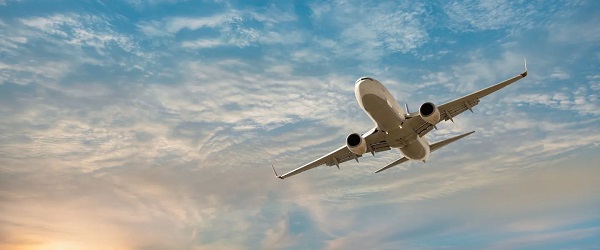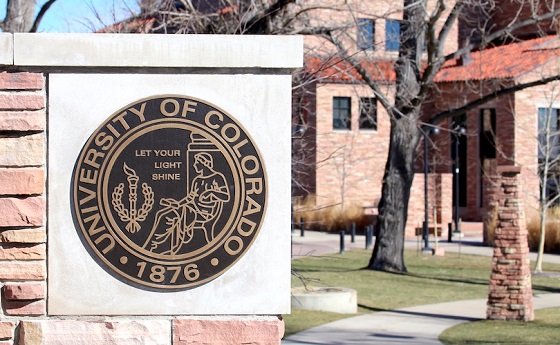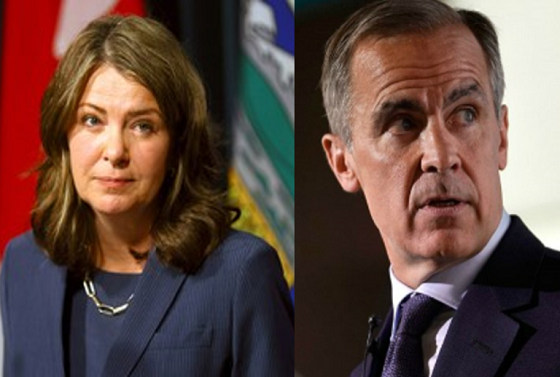Bruce Dowbiggin
Climate & Covid: How The Certainty of Elites Destroyed A Decade
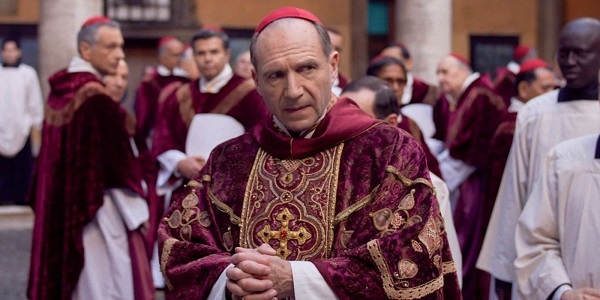
It probably wasn’t meant as an epitaph for the years since 2008, but a speech from the recent movie Conclave might serve all the same. In the film, a British Cardinal Lawrence (Ralph Fiennes) must be deacon to the Conclave electing a new pope. He is hesitant to accept the responsibility in times of intolerance. His homily explains why.
“Certainty is the great enemy of unity. Certainty is the deadly enemy of tolerance. .. If there were only certainty and no doubt there would be no mystery. And therefore no need for faith. Let us pray God will find us a pope who doubts.” (Spoiler alerts forbid further plot developments.)
Cardinal Lawrence might well have been describing the deadening effects of certainty since the election of Barack Obama (2008) and Justin Trudeau (2015). Under the guise of enlightenment Obama and then Trudeau have employed certainty as a battering ram. Those who expressed doubt were eliminated. Those bending a knee were spared— for now. Those at the top got great Taylor Swift tickets.
While artfully claiming disinformation/ misinformation as dire threats to humanity they used censorship to eliminate opposing views to their radical progressive agendas. The two most prominent of those agendas were, of course, the toxic twins of Climate and Covid.
While the global warming… oops, climate-change hustle had been around for some time it was only under the auspices of Obama and then Trudeau that it gained its ability to punish dissent. Who can forget Obama’s sneering admonition to doubters that 97 percent of scientists were onside with Al Gore and Greta Thunberg because The Science Was Settled? This was certainty on steroids.

In short order, newspapers banned letters to the editor disputing the manipulative programs of the UN and the IPCC (among the many drawing hundreds of millions in public funds). Opposing climate voices disappeared from CBC television panels. To dispute controversial claims was an invitation to disastrous law fare, as Canadian journalist Mark Steyn discovered. Our piece The Right To Criticize Climate Change Has Cost Mark Steyn Almost Everything highlights the decade-plus ordeal he suffered in D.C. courts for pointing out the fraudulence of Michael Mann’s hockey-stick oeuvre.
All for disputing the certainty of the science behind a global scheme to move billions from the first world to developing nations. (Which is then reportedly laundered back to the U.S.) Were Steyn’s case an exception we might grant his oppressors leeway. But the certainty principal of Obama and Trudeau on climate cost thousands of scientists their livelihoods, bankrupted others and blackened their life’s work. To no effect on climate itself.
In Canada, Trudeau named a convicted criminal and ruthless zealot as his climate minister. Steven Guilbeault took certainty to its illogical end, dragging the faculty lounge of idiots in Trudeau’s cabinet along with him. Again, career scientists and researchers were crushed by his onslaught of a useless carbon tax, EV mandates and ridiculous bans on workable solutions such as nuclear. Dispute was fruitless. They were that certain of their holiness.

But climate certainty was simply the appetizer for the banquet of Covid. Here both Trudeau and Obama (and his successors in the the U.S. health industry) wielded certainty into a script that not even Hollywood would have considered plausible in 2000.
Most now recall the Rod Serling scenario of an engineered Chinese virus somehow wiping out civilization. This plot was employed to suspend everyday activity and lock the population in their homes across much of the West and Asia. (Surprisingly Africa declined the invitation to insanity and survived nicely, thank you.)
Lock downs, masks, distancing, surface wiping, police raids, government bans— all were the poisoned fruit employed by bureaucrats and fanatics in service of their certainty. Everyone has their pained memory of overreach, from arresting surfers on the beach to locking arriving Canadian travellers into hotels to seniors dying alone in quarantined wards.
Citing the worthlessness of masks was always accompanied with the admonition that defying the new normal was a fatal threat to someone’s grandmother. It is a truism that people cannot remember the pain of dental extraction or childbirth. But the dystopian effects of Covid are likely to be carried to the grave by young people isolated from schools and grieving citizens denied a final farewell to parents.
While authorities sought to keep their grip, certainty finally began to erode. It was revealed that six-foot distancing was an invented standard, masks were useless in stopping the spread of the virus and the avalanche of positive tests were largely false positives and unlikely to make anyone sick. Soon Covid humour became accepted. Compliance was mocked. Citizens chucked the mask and re-started life.
Those certain in their power recoiled at the insubordination. Armin Rosen noted their stunned disbelief in Tablet, “Perhaps the higher levels of the American media complex, masquerading in the clothing of a different century, should embrace their essentially patrician urges and accept their permanent bafflement at the inscrutable, inexplicable passions of the American polity, thus exempting themselves from any deep concern about what the rest of us are up to.”
Donald Trump’s call to reject those who’d prospered in Covid found willing ears in the United States. His resounding sweep in the 2024 elections— every state in the union moved rightward in voting— was the final rebuke to those who preached certainty. The same people who sloughed off not one, but two assassination attempts on a presidential candidate as mere distractions.

It remains to be seen whether docile Canadians, always deferring to authority first, will shake off the certainty crowd in the next federal election. The Liberals are still hoping they can fool them with the Pierre Poilievre-as-Trump-as-Hitler narrative, a scare tactic that failed miserably down south. (One recent poll shows the Conservatives winning 240 seats, the Liberals with 19.)
Cardinal Lawrence’s appeal in Conclave to a higher purpose than certainty should be a stake in the heart of those who’ve oppressed their families and neighbours to no perceptible gain. The Trump comeback signals an opportunity with RFK Jr. and Elon Musk for a revival of healthy debate and skepticism. Whether it holds and prospers is still uncertain. But we have learned that uncertainty is a thing to be wished for.
Bruce Dowbiggin @dowbboy is the editor of Not The Public Broadcaster A two-time winner of the Gemini Award as Canada’s top television sports broadcaster, he’s a regular contributor to Sirius XM Canada Talks Ch. 167. His new book Deal With It: The Trades That Stunned The NHL And Changed hockey is now available on Amazon. Inexact Science: The Six Most Compelling Draft Years In NHL History, his previous book with his son Evan, was voted the seventh-best professional hockey book of all time by bookauthority.org . His 2004 book Money Players was voted sixth best on the same list, and is available via brucedowbigginbooks.ca.
Bruce Dowbiggin
Carney Hears A Who: Here Comes The Grinch

It’s a big day for the Who’s of Whoville. Mayor Augustus Maywho is now polling at 62 percent approval. Cindy Lou Who and Martha May Whovier can barely contain their trans-loving heart that finally the Pierre The Grinch is done.
Okay it’s not WhoVille. It’s Canada and it is leader Mark Carney who’s zooming in the polls against Pierre Poilievre. But it might as well be the real nation that Carney commands today. As 2025 comes to a conclusion Donald Trump seems the least of Whoville’s perils. For example:
The NDP government in B.C. has now declared that future legislation must be interpreted through the lens of the United Nations Declaration on the Rights of Indigenous Peoples. According to Chief Bent Knee (David Eby) this means that the province cannot act independently of the progressive diktats of Sudan, Nepal, Moldova and other international titans. Having been informed of Canada’s “genocidal” behaviour by Trudeau in the Rez Graves pantomime, the UN folk will no doubt look on Canadians as worthy of punishment.
The UNDRIP menace has been around since the days when Skippy Trudeau was wielding the mace in Parliament. On June 20, 2021 the federal government passed UNDRIP into law by a vote of 210 to 118. (The Liberals, NDP and Bloc all voted in favour.) The only party that opposed it were the Conservatives. In defence of those hapless boobs none of them voting yes ever expected a province to align itself with such legislation. That’s the Canadian way. Act on conscience. Retract on self preservation.

But on the heels of Eby’s unopposed capitulation to B.C.’s many “peoples” in recent land settlements, ones that threaten the legal right to properties of home owners, the wholesale framework for governing the province now will be determined by appeal to the UN.
The Carney crew — who act as though Canada’s indigenous communities are now equal partners in Confederation— assure Canadians that judicious lawyering by government savants has everything under control, but anyone trusting the Liberals after the past decade is in need of counselling.
The B.C. conundrum plays into another of the challenges (read: disasters) faced in B.C. by the Elbows Up brigade. Namely the much-heralded memorandum of understanding on energy policy between the feds and Alberta. Canadians were assured by Ottawa that this federal government sees pipelines as a priority, and getting Alberta’s product to tidewater as an urgent infrastructure need. Carney described the MOU as if it were a love-letter to the restless West. How is he going to get pipelines through to the B.C. coast when Eby and the indigenous said it was a no-go? Trust us, said Carney.
Before you could say Wetaskiwin dark clouds gathered on the deal. Smith took it in the ear from Alberta separatists for compromising anything to the feds. Carney, meanwhile, ran into the predictable roadblock from B.C. Eby talked of maybe allowing pipelines in the future, but the ban on shipping off the province’s shoreline was verboten.
To test the resilience of the MOU the federal Conservatives (remember them?) put forward a motion to build the pipeline from Alberta to the B.C. coast. Even though the motion used the same language of the MOU between Danielle Smith and Mark Carney, the Liberals and their hand maidens defeated the motion. Carney himself abstained because, hey look at that shiny object.
Immediately the Trudeaupian Deflection Shield was employed. Here’s Liberal Indigenous Service minister and proud Cree operative Mandy Gull Masty “Today’s motion that’s being put on the floor is not a no vote for the MOU. It’s a no vote against the Conservatives playing games and creating optics and wasting parliamentary time when they should be voting on things that are way more important.”
Robert Fife, the highly rated G&M scribbler who just won some big award, led the media pack, “Conservatives persist with cute legislative tricks, while the government tries to run a country.” Run a country? Into the ground?
Let’s not forget the $1.5 billion bloviators at CBC. They, too, say the vote is a big loss for the Tories. “It risks putting them offside, what is a very top priority and frankly, was considered a big win for Alberta Premier Danielle Smith.’” said Janyce McGregor. Here’s Martin Patriquin on one of the Ceeb’s endless panels. “It’s embarrassing, man. I don’t see any sort of political advantage to what happened today.”
Embarrassing? The Libs have committed to re-building gas pipelines in Ukraine, even as they stall on developing pipelines in Canada. Luckily CBC washrooms have no mirrors. And there’s always Donald Trump to deflect from the pantomimes of Canadians Laurentian debating club.
Here, CTV hair-and-teeth Scott Reid is nursing a Reuters poll that has Trump’s approval at historic lows of 36 percent. Reuters is a firm that predicted Kamala winning the presidency. Until she didn’t on Nov.4. Meanwhile Rasmussen, which correctly had Trump ahead the entire campaign, has his current approval at 44 percent while the RCP average is 43.9.
But corrupt data to make Trump seem odious is no sin in WhoVille Ottawa. Keep feeding the Karens bad data. At least Canadians have their beloved healthcare to fall back on. Or maybe their beloved MAID. A Saskatchewan woman suffering from parathyroid disease has revealed that she is considering assisted suicide, because she cannot get the surgery she needs.
“Jolene Van Alstine, from Saskatchewan, has extreme bone pain, nausea and vomiting. She requires surgery to remove a remaining parathyroid, but no surgeons in the province are able to perform the operation. In order to be referred to another province for the operation, Van Alstine must first be seen by an endocrinologist, yet no Saskatchewan endocrinologists are currently accepting new patients.
The pain has become so unbearable that she has been approved for Canada’s euthanasia and assisted suicide program, with the ending of her life scheduled to take place on 7 January 2026.”
Well. Happy New Year, Canada. May no one offer you MAID in the next twelve months.
Bruce Dowbiggin @dowbboy is the editor of Not The Public Broadcaster A two-time winner of the Gemini Award as Canada’s top television sports broadcaster, his new book Deal With It: The Trades That Stunned The NHL And Changed hockey is now available on Amazon. Inexact Science: The Six Most Compelling Draft Years In NHL History, his previous book with his son Evan, was voted the seventh-best professional hockey book of all time by bookauthority.org . His 2004 book Money Players was voted sixth best on the same list, and is available via brucedowbigginbooks.ca.
Bruce Dowbiggin
Wayne Gretzky’s Terrible, Awful Week.. And Soccer/ Football.
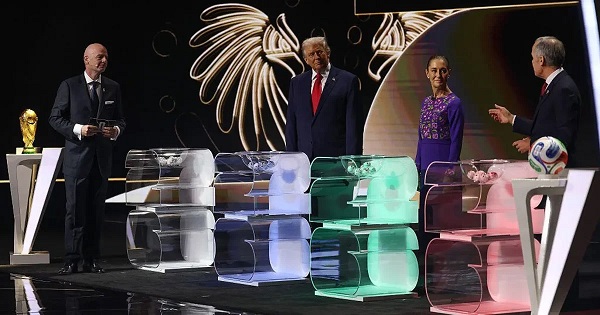
Inquiring minds want to know: Why did FIFA (Federation of International Fraud Artists) award American president Donald Trump a new “Peace Prize” at the Washington D.C. draw for the June/ July tournament? The usual suspects are paralyzed with rage. Everyone else is laughing at the kabuki theatre stunt.
The short answer is that if you were FIFA and you were receiving a reported billion or more dollars from the U.S. and the Canadian/ Mexican cities hosting the 48-team tournament you’d give the host more than a bottle of wine and flowers as a thank-you. Thus the ugly statue and the Boy Scout medal. The obsequious awarding of the prize and match medal were proportionate to the greed of FIFA in extorting the cash.
(America’s fainting goat media immediately complained about unearned awards for little virtue, forgetting as usual that the Nobel folks gave Barack Obama a Peace Prize after nine months in the White House for simply being a black man.)
Trump getting a peace award from FIFA, the most corrupt sports body in the sports world, is mint, however. You can’t write this stuff. (They should give it to him on a speed boat heading across the Caribbean.) The Donald then playfully suggested that Americans leave the name football to the soccer folks because, you know… feet and a ball. More outrage from NFL fans.
So what was the gift for the two Canadian cities hosting games who have also coughed up plenty? Toronto says its estimated budget is $380 million for six games/ B.C. tax payers are obliged to cough up an estimated $580 million for Vancouver’s five games). For cities with, how shall we say, bigger fish to fry.
Sadly all they got was a little farce in which a delighted PM Mark Carney was allowed to Canada as the first ball to start the picking, evidently unaware that all the balls he had to select from also said Canada. Carney’s joy was tempered when he saw Mexican president Claudia Sheinbaum draw a ball that said “Mexico” while Trump— in on the fix— got one entitled “United States”.

In a final attempt to curry favour with the fleeced nations FIFA boss Gianni Infantino gathered the world leaders for a painful onstage selfie, marking the first time Trump and Sheinbaum had ever met in the (orangey) flesh. Call it National Lampoon’s Soccer Vacation.
Having exhausted itself with the peace prize falderol FIFA evidently forgot to put any more thought into the rest of the 55-minute run-up to the draw. While soccer/ footie fans around the world ground their teeth in impatience the organizers presented a combination Eurovision/ People’s choice Awards ordeal of failed cues, untranslated interviews (the Spanish translator showed up about 30 minutes late) and pregnant pauses.
Host Heidi Klum’s stunning gold dress nearly made up for her wooden repartee with comedian Kevin Hart (“not sure why I’m here”) and co-host Rio Ferdinand, former star English defender who, alas, never won the WC. But that was all an appetizer for the real low point, the introduction of global brand stars to pick the draw. NFL legend Tom Brady, NBA legend Shaquille O’Neal and NHL… er, player Wayne Gretzky.
Their task, hectored by the hosts, was to draw a ball, unscrew the thing, withdraw a nation’s name and so on. While there may have been some tension in the audience there was no appreciation of that on the screen as more clunking dialogue and curious pronunciations (Ferdinand kept referring to Group “Haitch”) landed dead on the floor.
The nadir of the ceremony—indeed of his career— was Gretzky’s contribution. Brady and O’Neal had managed to survive their task of unscrewing the ball and pronouncing a name, but Gretzky was brought low by the stage business of the balls and the nations he was forced to announce.

The clearly flustered Gretz (he insisted he’d practiced all morning) wrestled manfully with the balls. Finally the producers went with a long shot of him fumbling in the dark. Then he topped that. Gretzy apparently thinks there are countries called “North Mack-a-donia” and “Cur-ack-ow.” Other stabs at geography were almost as tortured.
Bitter Canadians could put up with him sucking up to Trump (he was mentioned as being in the crowd at the DC Xmas tree lighting) but failing geography is unforgivable. The week that started with Gretzky in a photo golfing at POTUS’s Jupiter, Florida, golf course was ending with him pummelled for his abuse of nations with different-sounding names. The Wayne Gretzky Center For Kids Who Want To Talk Good.
The moral: Never send a centre to do a netminder’s job. Makes you understand why Bobby Orr has laid low since his Trump endorsement came out.
With that bracing date with immortality disposed of the draw proceeded. We had been pounded for an hour about how great the tournament was, and finally footy fans got what they wanted. As a host Canada got a bye into the field. Their reward is playing the tenacious Swiss and, gulp, probably Italy, which is forced to qualify after playing with their food for too long. (Insert your Stanley Tucci joke.)
If not Italy then one of Wales, Bosnia and Herzegovina or Northern Ireland. Oh, right Qatar is in there too as fodder. Been nice knowing you, Canada. The Americans somehow drew a creme puff quartet of Australia, Paraguay and Slovakia, Kosovo, Turkey or Romania. Money can’t buy you love, but it can get you a warm hug from FIFA.
In the end it’ll be one of Brazil, Argentina, Germany or France for the final in the NJ Meadowlands on July 19. Maybe they’ll have a spelling bee at halftime. Or maybe they’ll bring back Trump for the final game to give him another peace prize. Just don’t ask Gretzky to announce Lothar Matthaus, Bruno Guimaräes or Gabriel Magalhäes.
Bruce Dowbiggin @dowbboy is the editor of Not The Public Broadcaster A two-time winner of the Gemini Award as Canada’s top television sports broadcaster, his new book Deal With It: The Trades That Stunned The NHL And Changed hockey is now available on Amazon. Inexact Science: The Six Most Compelling Draft Years In NHL History, his previous book with his son Evan, was voted the seventh-best professional hockey book of all time by bookauthority.org . His 2004 book Money Players was voted sixth best on the same list, and is available via brucedowbigginbooks.ca.
-
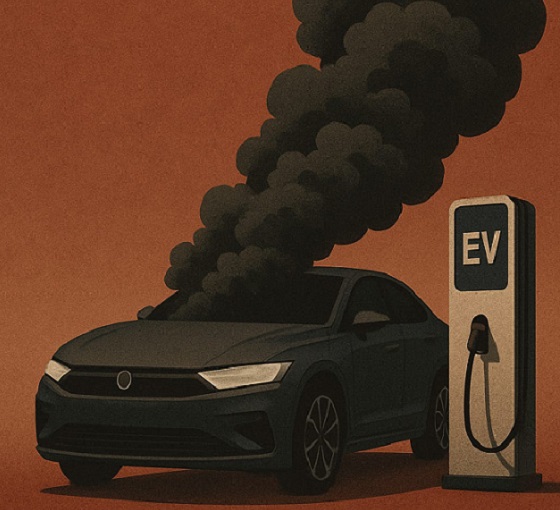
 Automotive2 days ago
Automotive2 days agoThe $50 Billion Question: EVs Never Delivered What Ottawa Promised
-

 Local Business2 days ago
Local Business2 days agoRed Deer Downtown Business Association to Wind Down Operations
-
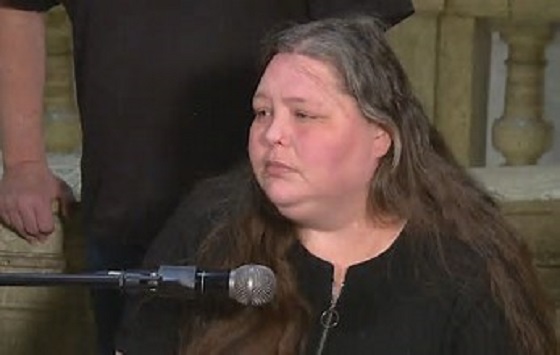
 International2 days ago
International2 days agoTrump admin wants to help Canadian woman rethink euthanasia, Glenn Beck says
-

 C2C Journal2 days ago
C2C Journal2 days agoWisdom of Our Elders: The Contempt for Memory in Canadian Indigenous Policy
-
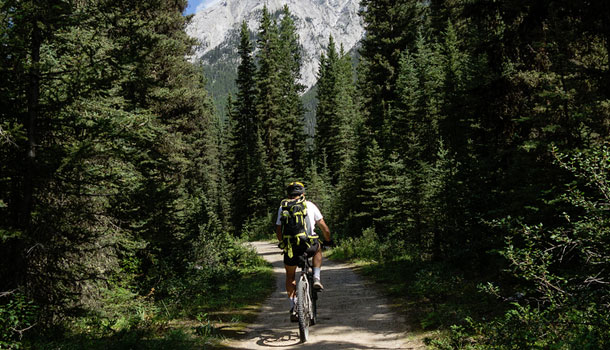
 Alberta2 days ago
Alberta2 days agoAlberta introducing three “all-season resort areas” to provide more summer activities in Alberta’s mountain parks
-
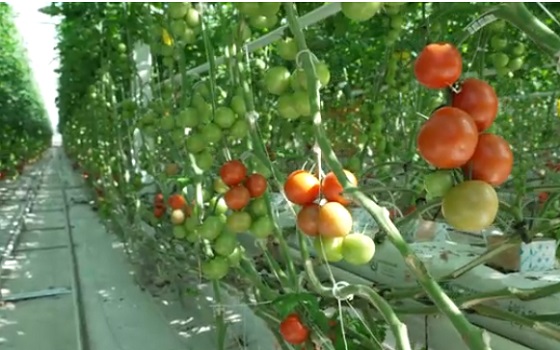
 Agriculture2 days ago
Agriculture2 days agoGrowing Alberta’s fresh food future
-
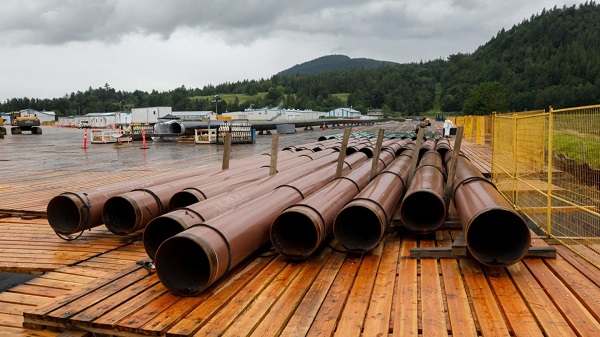
 Alberta2 days ago
Alberta2 days agoThe case for expanding Canada’s energy exports
-
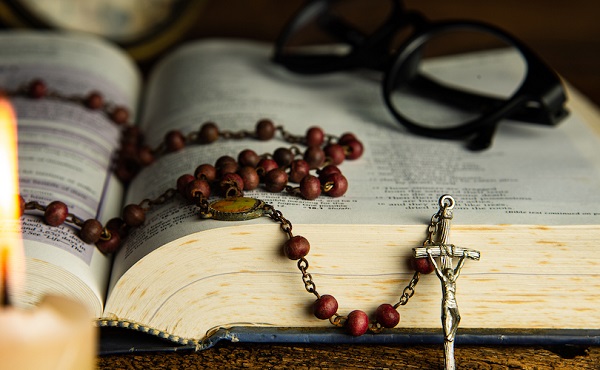
 Censorship Industrial Complex2 days ago
Censorship Industrial Complex2 days agoConservative MP calls on religious leaders to oppose Liberal plan to criminalize quoting Scripture





